- Author Jason Gerald [email protected].
- Public 2024-01-19 22:11.
- Last modified 2025-01-23 12:04.
The purpose of this guide is to show web designers how to install Wordpress [1] (2.8 or higher) locally on their computers for the purpose of designing and testing WordPress themes. WordPress requires that the computer on which you are installing it has a web server (such as Apache, Litespeed or IIS), PHP 4.3 or greater and MySQL 4.0 or greater.
XAMPP [2] is an easy-to-install web server environment, which has all the components previously mentioned. All of the following instructions are based on the assumption that you have an XAMPP installation running locally on your computer. This tutorial does not cover installing XAMPP. For more information about XAMPP, visit the official XAMPP website (https://www.apachefriends.org/en/xampp.html).
Step
Step 1. Download and save the latest version of Wordpress from the following link:
wordpress.org/latest.zip
Step 2. Extract the contents of the ZIP file named "wordpress.zip", which was downloaded in step 1 to the htdocs folder in the XAMPP directory
If the ZIP file has been extracted correctly, there should be a new directory named "wordpress" in the \xampp\htdocs directory. Before the process can proceed, make sure that the web server environment is running properly.
Step 3. Visit the main XAMPP page by opening a web browser and entering the following URL:
localhost/xampp/.
Step 4. Select the link called "phpMyAdmin" at the bottom left side of the menu or by entering the following URL:
localhost/xampp/phpmyadmin.
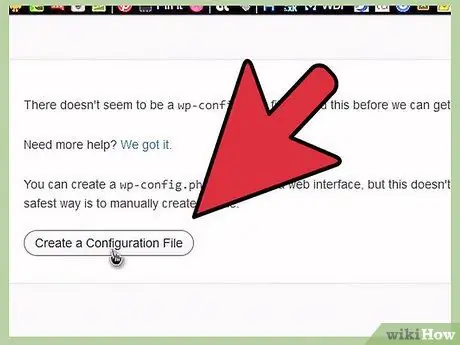
Step 5. On the main phpMyAdmin page, there will be an area in the middle of the screen called "MySQL localhost"
From this section a new database will be created for use by the WordPress installation.
- In the field labeled "Create new database", enter the name "wordpress". From the dropdown menu labeled "Collation", select "utf8_unicode_ci". Then, hit the button labeled "Create".
- If the database input created was successful, the message "WordPress database has been created" should be displayed.
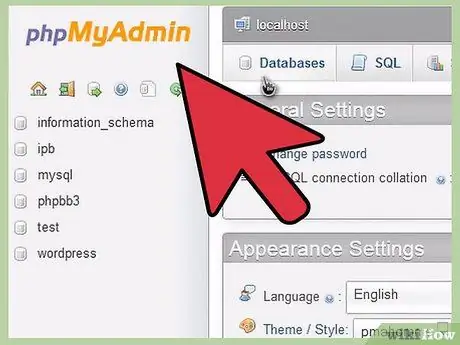
Step 6. Use Windows Explorer navigation to navigate to the xampp\htdocs\wordpress directory
Open the file called "wp-config-sample.php" in the wordpress directory.
Step 7. Once the file is opened, edit the following lines:
/** The name of the database for WordPress */define('DB_NAME', 'putyourdbnamehere'); ==> change 'putyourdbnameheree' to 'wordpress'/** MySQL database username */define('DB_USER', 'usernamehere'); ==> change 'usernamehere' to 'root'/** MySQL database password */define('DB_PASSWORD', 'yourpasswordhere'); ==> change 'yourpasswordhere' to ' ' (leave blank)
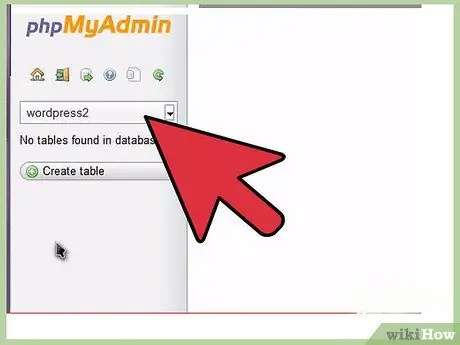
Step 8. Once the file has been edited as described in the previous step, save a copy of the file as "wp-config.php" in the wordpress directory and close the file
Step 9. Visit the WordPress installation page by opening a web browser and entering the following URL:
localhost/wordpress/wp-admin/install.php.
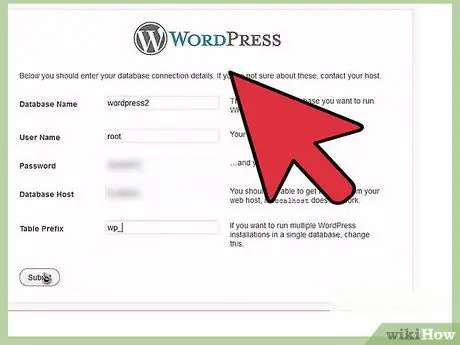
Step 10. Enter a title for the blog in the field labeled "Blog Title"
Enter your email address in the field labeled "Your E-mail". Then hit the button labeled "Install Wordpress".

Step 11. If the information in the previous step was entered correctly, there should be a new screen titled "Success
". This screen presents a username called "admin" and a temporary password. This is a randomly generated password, so it's important to keep track of it until a new password is selected. Press the button labeled "Log In".

Step 12. On the Log In screen, type the word "Admin" in the field labeled "Username" and type the temporary password, created in the previous step, in the field labeled "Password"
Press the button labeled "Log In".
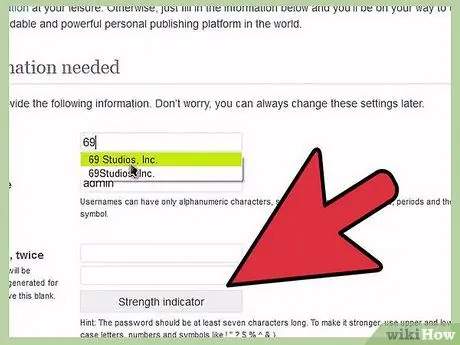
Step 13. If the login is successful, the WordPress Dashboard will appear
There is a notification stating that the automatically generated password is in use and to change it to something easier to remember. The link labeled "Yes. Take me to my profile page" allows a temporary password to be changed. Once the password is changed, content and theme editing can begin.






